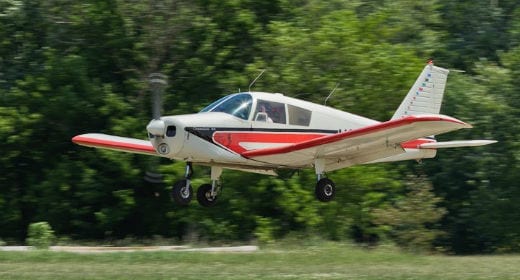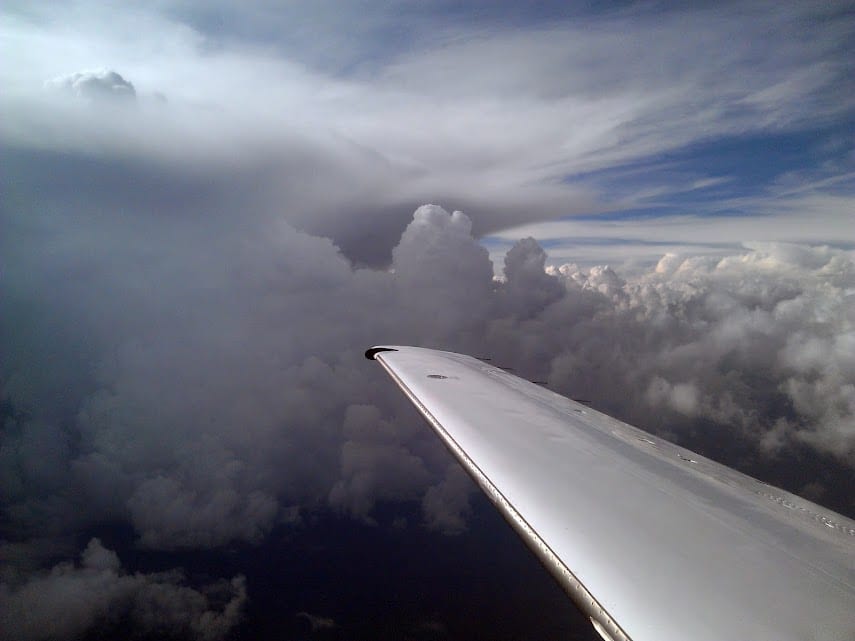
The most important person at your airport
OpinionNo, it's not the control tower operator, it's not the person who mows the grass, and it's not the person who plows the snow - it's an AOG (aircraft on the ground) transient. Sporty's Founder Hal Shevers explains why.

Debate: do electronic stability systems improve safety?
DebateMore and more airplanes are being equipped with Electronic Stability systems, which monitor the pilot's performance at all times and gently nudge the controls back towards stable flight. Will such systems improve safety, or are they merely the latest gadget?

Why off-field landing #61 was different from the other 60
I was thereWe decided to explore, so Christian aimed the bird north, easing in the power to climb above the wave’s rotor. And then the world came unglued! The engine burst into roaring chaos, with hideous vibration, which had the shock mounted instrument panel in a blur.

“Never bank over 30 degrees in the pattern,” and other lessons
I Can't Believe I Did ThatThe crosswind blew me a little past the runway line as I came around on final and I banked it left and added a bit of power to get lined up. Things suddenly got quiet and I had an epiphany! For the first time I really understood why my instructors had said never bank over 30 degrees in the pattern.

My Adventure: circumnavigating the Sierra-Nevada Mountain Range
My AdventureSometimes life lets you make the most of an opportunity. With my friend's new house near Chino Airport, I could offer this trip in about two and half hours total travel time, with two of those hours in the air in a Piper Arrow II. There was the opportunity: a trip made-to-order for a VFR pilot.

The day the dream flew away
I was thereOn a rainy August morning, the people who bought my airplane came to Washington to fly it home to Northern California. I was numb during the exchange of money and completion of documents because it marked the end of 38 years of flying/caring for that airplane.

Is “hard IFR” a myth? 5 things to keep it from being that way
Dick's blogI never knew what people really meant when they talked about flying “hard” IFR. The implication is that there is also “easy” IFR but nobody seemed to know the exact difference between the two. The most logical thing we can do is examine things we can do to keep instrument flying from becoming “hard” IFR.

The kid glove treatment – why airline passengers need to behave
I was thereIn the airline industry it is usually the cabin crew who come face to face with the loud mouths, the drunks, the ungrateful, and sometimes the dangerous. One written complaint and invariably the flight attendant will find his or her job on the line. Occasionally a nasty passenger will get just deserts.

Why do pilots hate recurrent training?
John's blogRegular training increases safety and confidence. It's good for you, right up there with eating more vegetables and exercising daily. But while all pilots know these facts, very few of us practice what we preach. Instead, we treat proficiency flights like a trip to the dentist: something we do only as often as we're required to, and even then we dread it.

Hungry Pilot: Piccadilly Lilly Airport Diner
The Hungry PilotOur latest stop in the search for the perfect $100 hamburger takes us to Wisconsin. The Piccadilly Lilly claims it offers home cooking and "the best biscuits and gravy around." The airport is also close to an interesting architectural landmark, making it a fun excursion for pilots.

How do we encourage new aviators?
OpinionWe proclaim the future of aviation lies in the hands of the youth, and we must give them opportunities to become pilots. We argue that flight training needs to be cheaper and we need to create more aviation programs so it is easier for them to succeed. We need scholarships and free flight training. But what kind of solution is moving the finish line closer to the start?

Airspeed vs. angle of attack – what pilots don’t understand
TechniqueMost pilots don’t really understand the relationship between airspeed and angle of attack. If they did, we would not have the loss of control accidents that we do. We fly strictly by numbers because we were taught that way. Very few flight instructors have any experience or knowledge in this area.

A harrowing tale(wheel)
I Can't Believe I Did ThatBack in 1979 I was working as a flight test engineer for Cessna Aircraft at the peak of general aviation’s heyday. One of the perks of my employment at Cessna was delivering aircraft to the dealers on weekends. Most times I would ferry the aircraft out in the morning and take the airlines home in the afternoon.

In the middle of a Cold War, Russians fish in the North Sea
I was thereI had previous experience in RAAF Fighter Squadrons and was familiar in the use of air-to-air missiles from tours in the Australian Sabre’s sidewinder-equipped aircraft. However, this mission was different where my aircraft was, itself, to become a “missile and see if they can shoot you down,” was the brief by the squadron Intelligence Officer.

Aviation mentors: getting by (and thriving) with a little help from your friends
I was thereStep back in time; think back to when you were the one looking over the airport fence. What did you ask? How did you ask? Who did you ask? Luckily, I always stumbled into someone who was gracious enough to give me a few minutes of their time and answer my questions.

Is coordinating the use of gizmos to control stick, rudder, pitch and power really flying?
Dick's blogBefore you accuse me of throwing gasoline on a fire, I’ll say up front that is exactly what I am doing. The airplane, it seems, has become almost secondary. It is this that has sparked the debate. Is the tail wagging the dog?

Solo today – ha!
I was thereOn this day, just before my first solo flight, my flight instructor wanted to demonstrate high speed taxiing and have me do some. After his demonstration, I began the high speed taxi exercise. However, I got on the brakes instead of only the rudder…

The taste of humble pie – admitting the “old-timers” were right
I Can't Believe I Did ThatSometimes in aviation we learn valuable lessons that reach far beyond the technical aspects of flying - like this story. I was young and full of youthful hubris at the time, and I thought I knew everything. I especially thought I knew more than all the “old-timers.”

Ice on the wings – would you tell the pilot?
DebateJust as I reached to push the call button and alert the crew that the wings were iced, the First Officer announced, “We’re number one for takeoff,” turned immediately onto the runway, and away we went. The clear, ripply ice on the wings was the only thing I could see; I vividly remember thinking, “Well, it’s a good day to die, sun shining, storm passed.”

Destination flying – Outer Banks of North Carolina
I was thereThe Outer Banks have a prominent place in aviation history, but they're also a beautiful place to visit by airplane. Local Ryan Thibodeau offers some airport tips and suggested stops in this pilot's guide to OBX.
